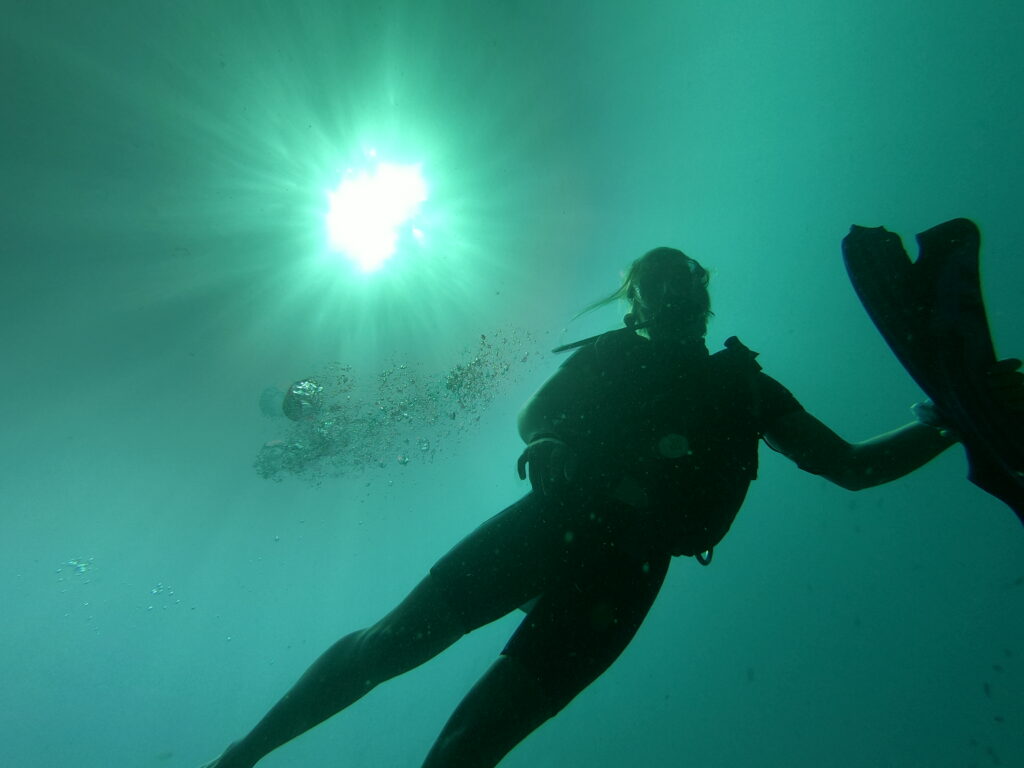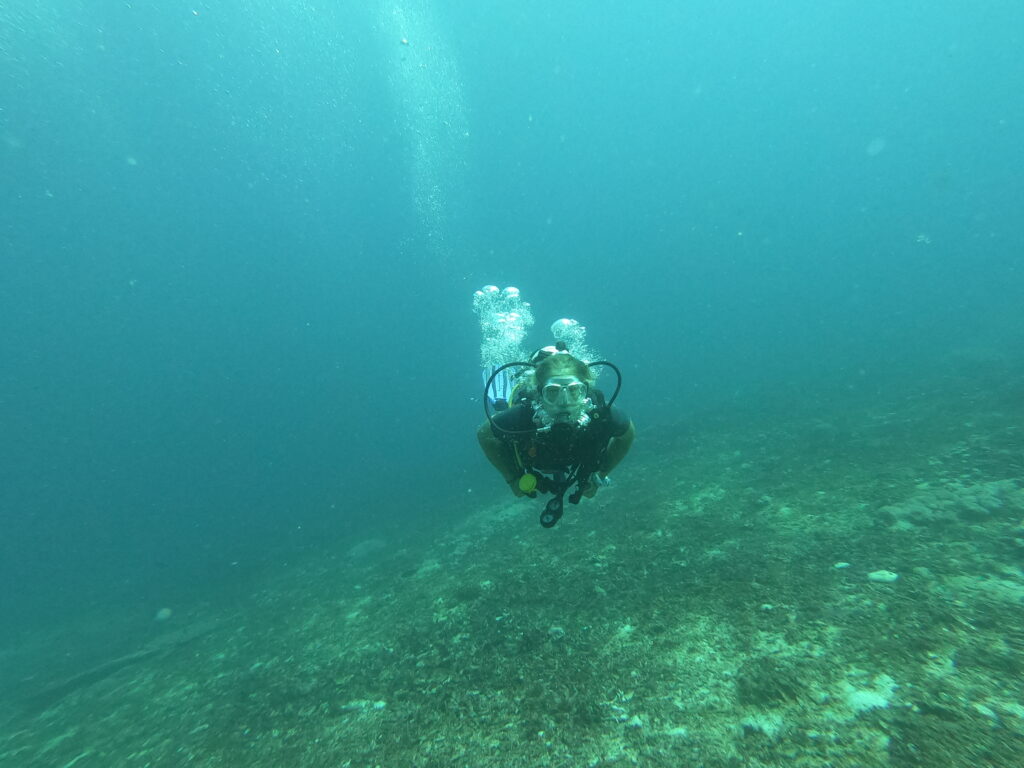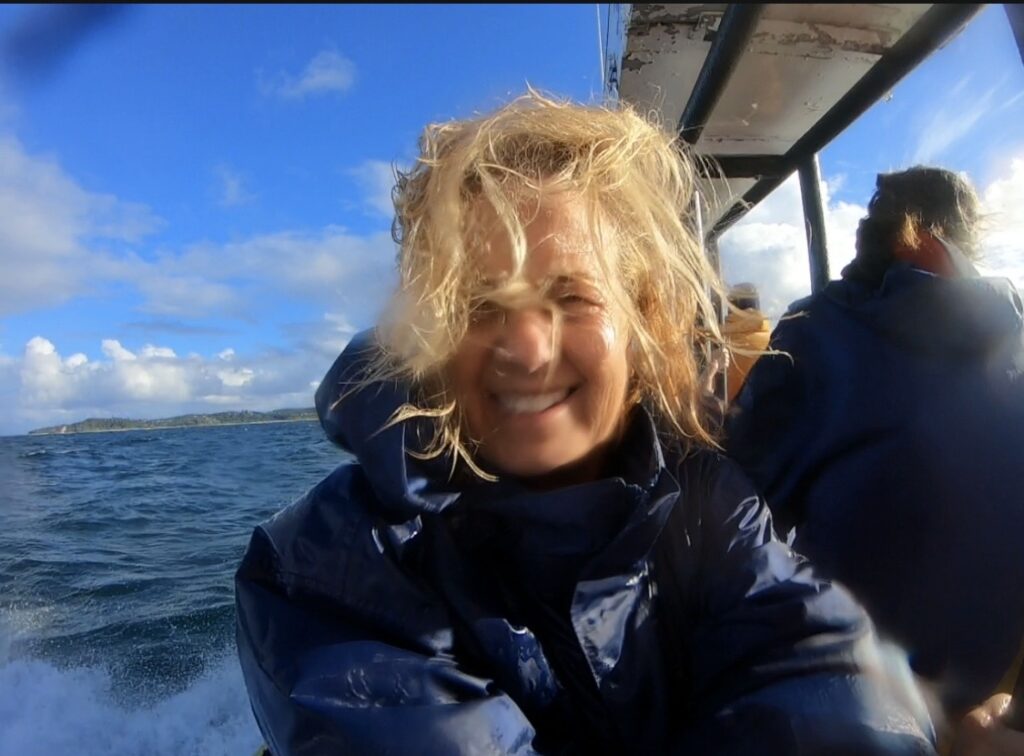The “Upside and the Low Down” of Improved Performance and Marine Trauma
April 14, 2025


While I would never suggest it’s the ideal way to improve your personal best, build resilience, or elevate performance, I can share a deeply personal story about how processing and healing water-related trauma unexpectedly enhanced my performance abilities as a professional scuba diver.
Four years ago, I decided to return to diving after years away, longing to reconnect with the sport I loved. I revived my gear—overhauling, servicing, and upgrading it for modern standards—and completed a refresher course. Ready to dive.
The setting was Byron Bay in winter
I hadn’t dived there in 20 years, nor anywhere in two years (since Bali). The location no longer matched my memories. The dive operation felt impersonal, the staff unprofessional, and the environment harsh: broken coral, strong swells, and poor visibility. Conditions were far from ideal.
No buddy teams were assigned—a basic safety protocol—so I paired with a non-English-speaking diver. Why did I proceed? Locked down during the pandemic and desperate for normalcy, I pushed forward. First lesson learned.
Gearing up on the boat, I struggled silently with new equipment. As an instructor, I felt too embarrassed to ask for help. Underwater, my new prescription mask fogged relentlessly (despite anti-fog prep), blinding me to both the environment and my gauges. Second lesson.
Visually compromised and uneasy, I relied on three false comforts: 40 years of experience, past dives in worse conditions, and shallow depth. None helped. Third lesson.
Twenty minutes in, battling a violent surge, I panicked—a first in four decades of diving. I surfaced alone, no boat in sight, the swell dragging me toward jagged rocks. Swallowing seawater, I spotted a buoy, kicked fiercely against the current, and finally signaled the boat with my surface marker. Rescued, I collapsed, weeping. My confidence—once unshakable—shattered. Fourth lesson: trauma’s corrosive grip on self-assurance.
For months, I grieved my lost passion
I was stuck in a cycle of distress until it bled into other areas of life. Trauma’s “freeze response” had taken hold, paralysing me until the pain forced action. I sought therapy: intensive Brainspotting and EMDR sessions, twice weekly for months, to process every haunting detail. Healing began when I could finally imagine diving again without turmoil.
Therapy also addressed lingering negative beliefs.
By 2025, I emerged transformed
I had:
- Broader resilience: My ability to handle life’s challenges improved unexpectedly, not just in water.
- Deeper self-reliance: I studied the human factors behind incidents, redefining what true preparedness means.
- Renewed purpose: I invested in top-tier equipment, not out of fear but respect for my passion.
- Confident boundaries: I now decline dives that exceed my comfort zone—not from limitation, but empowered choice.
- Advocacy: I speak up when safety protocols lapse, unburdened by self-doubt.
- Empathy: I intimately understand water-related fear and the courage to overcome it.



Though grateful the incident wasn’t worse, its lessons reshaped my performance. At 64, I dive with alignment between purpose and practice—a liberation forged through trauma’s unexpected gifts.
This isn’t a roadmap for growth, but proof that even professional mastery can unravel—and rebuild—stronger. If marine trauma or performance blocks weigh on you, know healing is possible. My journey transformed panic into purpose; yours can too.
Leave a Reply Cancel reply
2025 2ND OPINION PSYCHOTHERAPY
PRIVACY POLICY
WEBSITE BY THE STORY SHED
PHOTO CREDIT: BRUCE HAGGIE PHOTOGRAPHY
PHOTOS OF AZIA LIGTHART, WITH PERMISSION